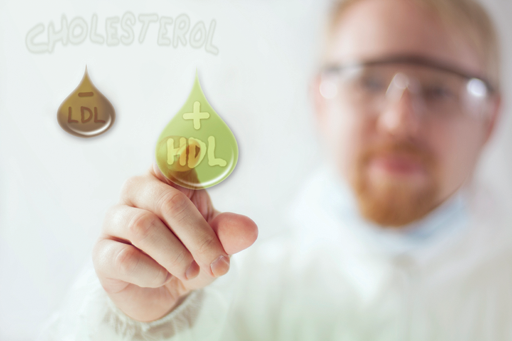It's not all bad news...
In Business Modules
Follow this topic
Bookmark
Record learning outcomes
October is National Cholesterol Month and presents a good opportunity to remind customers about the importance of this organic compound.

With all the bad publicity surrounding cholesterol, it's often forgotten that it's a substance made in the liver that's vital to human life. It is also present in certain foods; plants cannot create it, so it can only be found in animal products like meat and dairy.
Author of The Natural Health Bible For Women, Dr. Marilyn Glenville, explains why cholesterol isn't always negative: €The body needs cholesterol, that's why it produces it. The liver actually produces 80% of the cholesterol in the body; only 20% comes from food. Cholesterol is present in all cell membranes; the body uses it to make sex hormones (like oestrogen) and stress hormones (like cortisol) and also needs cholesterol for the manufacture of bile and vitamin D. The brain needs cholesterol; it is crucial for it to function properly. Cholesterol has got itself a bad name but it is essential for life.€
Glenville emphasises that cholesterol cannot travel around the body on its own. €In order to get to the cells, it is carried in the blood by combining with a protein, called a lipoprotein. It is the LDL (low density lipoprotein, often called 'bad' cholesterol) that carries the cholesterol to our cells and then it is removed and taken back to the liver by HDL (high density lipoprotein, 'good' cholesterol). If you have too much LDL and not enough HDL then the cholesterol can be deposited on inflamed artery walls causing furring of the arteries which can lead to them becoming blocked.€
Everything in moderation
Lowering cholesterol levels via diet doesn't mean it's simply a matter of cutting out cholesterol containing foods. €Many studies have been carried out to show that eating a diet containing moderate amounts of cholesterol, for example eggs, is not associated with an increased risk of heart disease,€ she says.
The main dietary factors to consider in helping to lower cholesterol include the introduction of foods that will help to:
- Alter the type of cholesterol you have by increasing the HDL form. Do this by increasing exercise and reducing stress, and introducing foods such as garlic, soya and the good essential fatty acids.
- Remove excess cholesterol from the body by supporting the liver and improving digestion by increasing the amount of soluble fibre that you eat.
- Remove foods that may interfere with the regulation of cholesterol synthesis which includes alcohol, caffeine and refined sugars. Cholesterol in its own right is not dangerous, she emphasises. It is when it has been damaged by free oxidising radicals that problems occur.
€Free oxidising radicals are natural by-products of energy production but these molecules can be neutralised by the presence of anti-oxidant nutrients such as vitamin A, vitamin E and vitamin C. It is therefore very important to make sure fresh fruits and vegetables are included in the daily diet, or consider taking a good anti- oxidant supplement,€ she advises.
